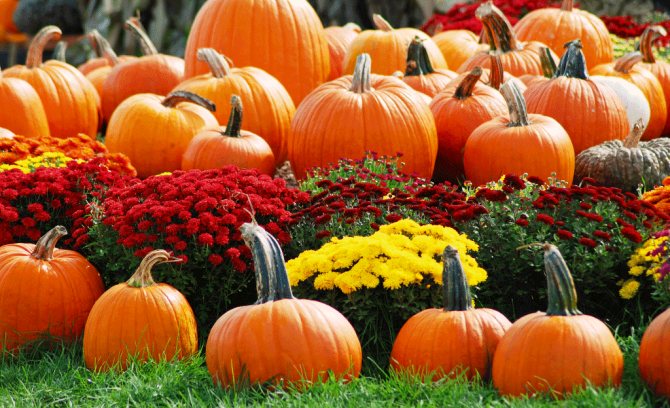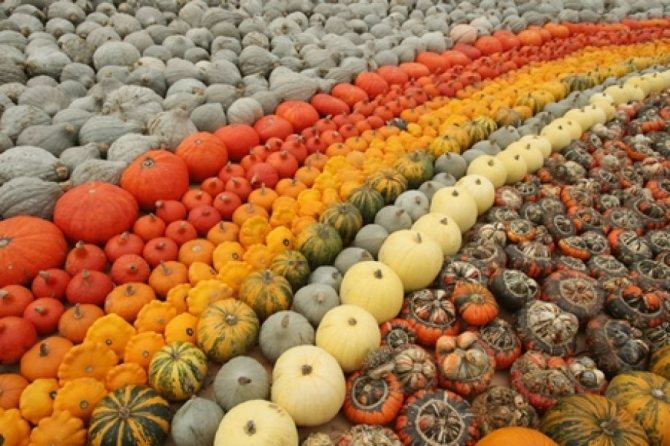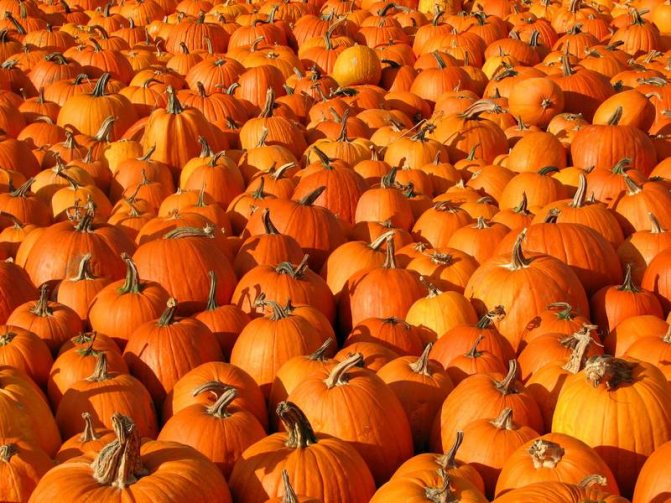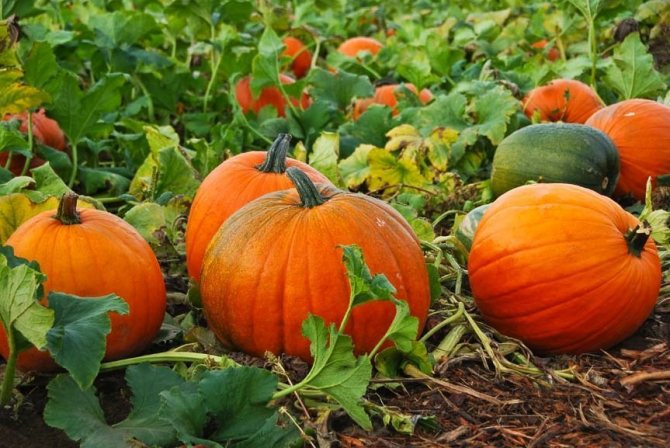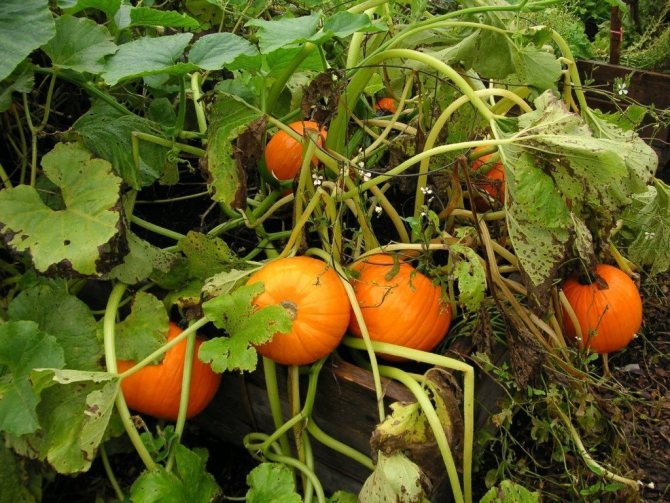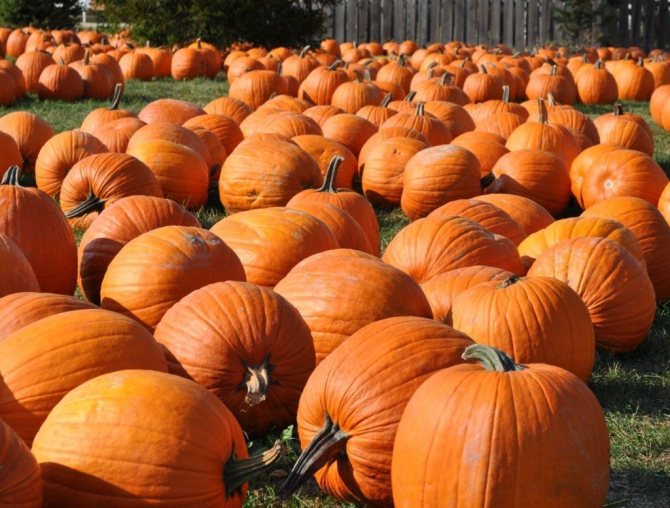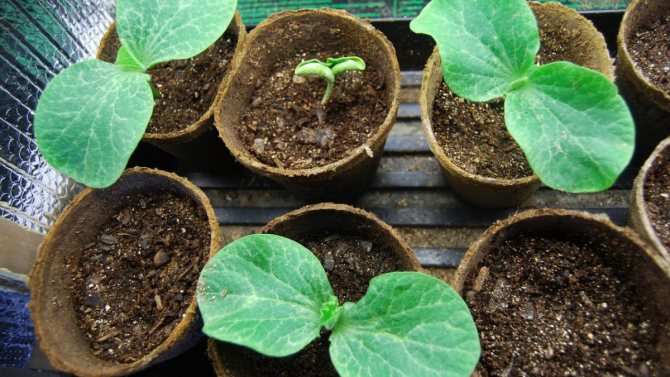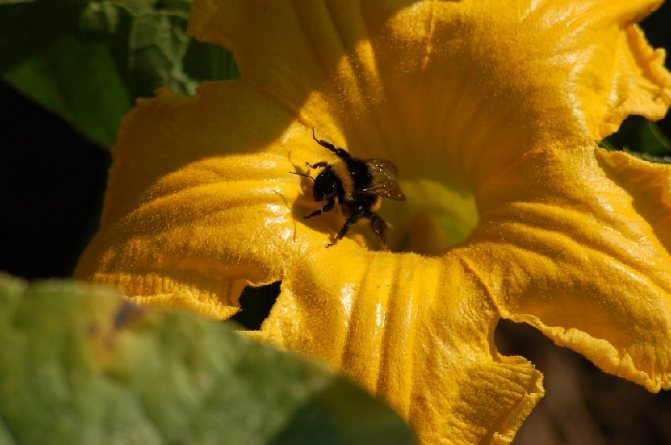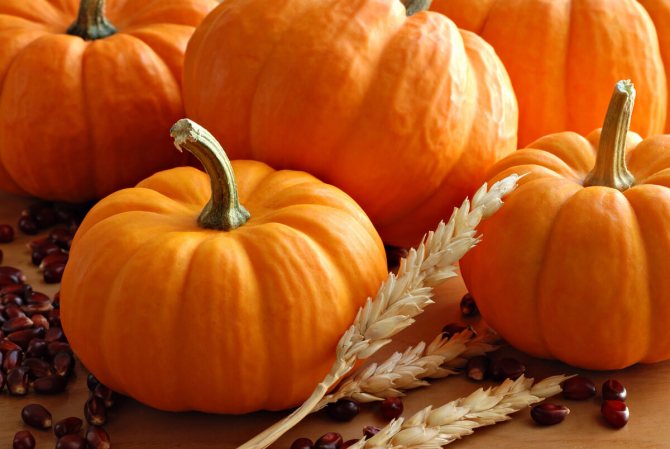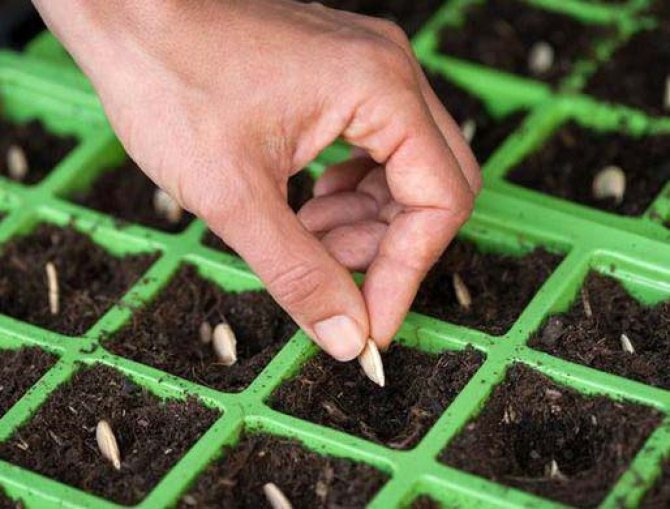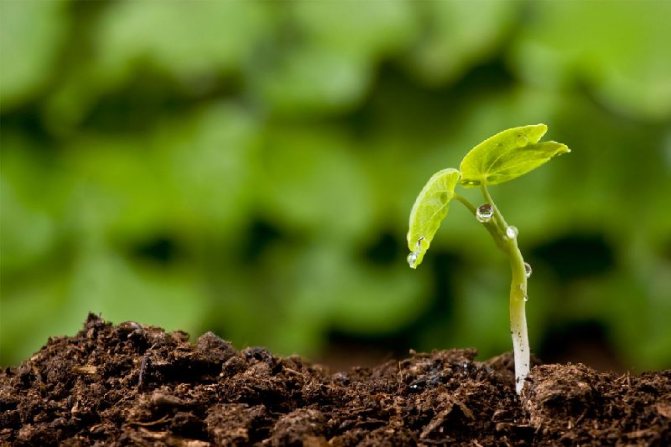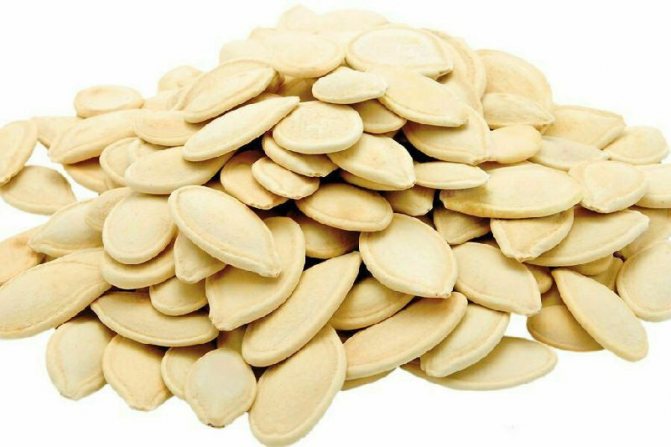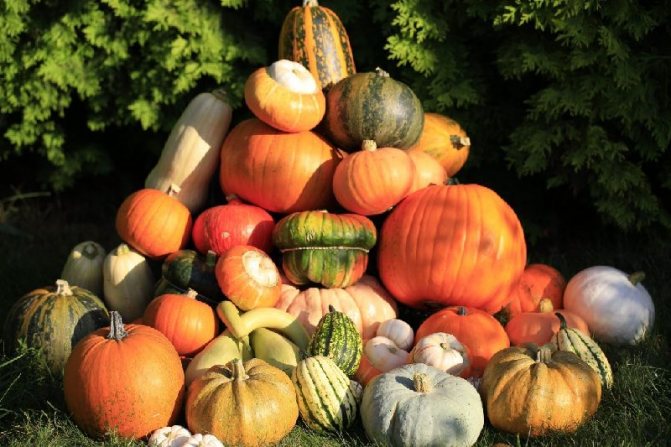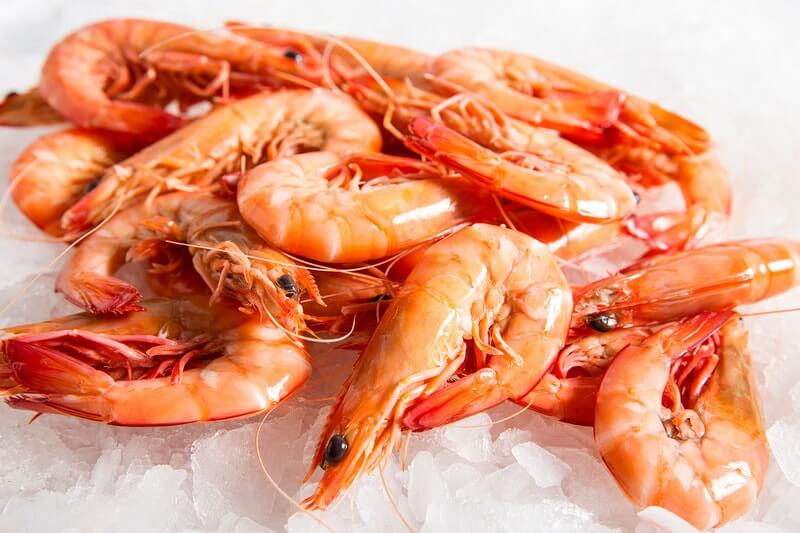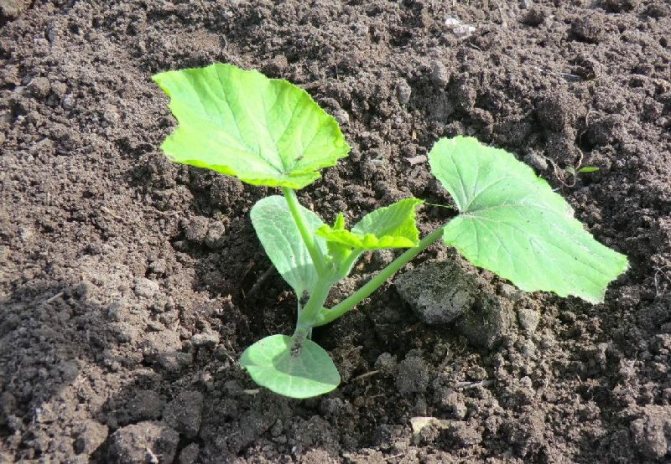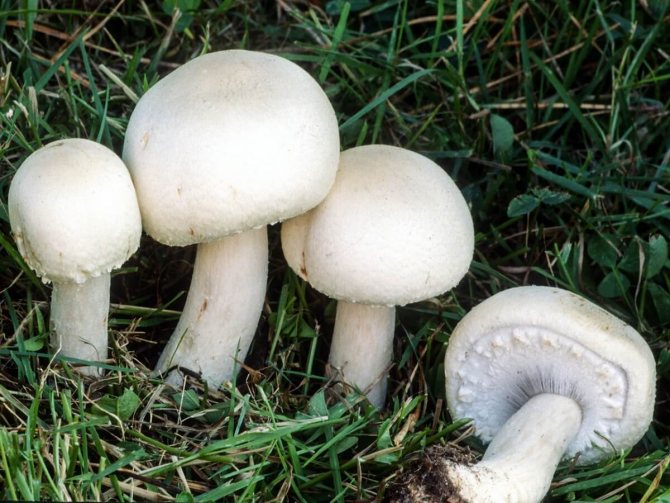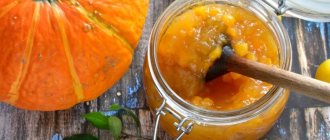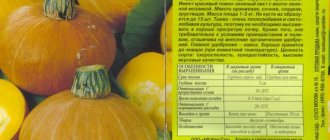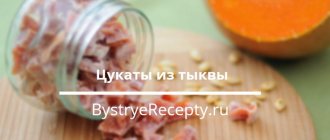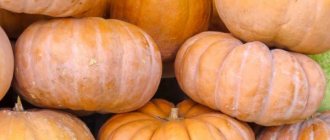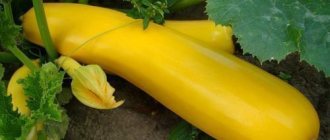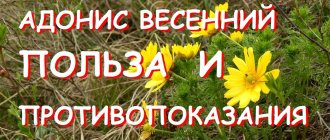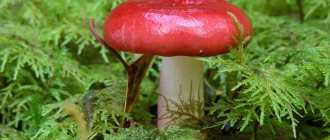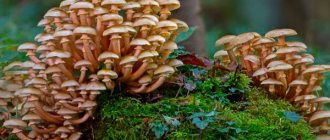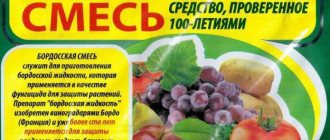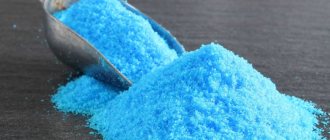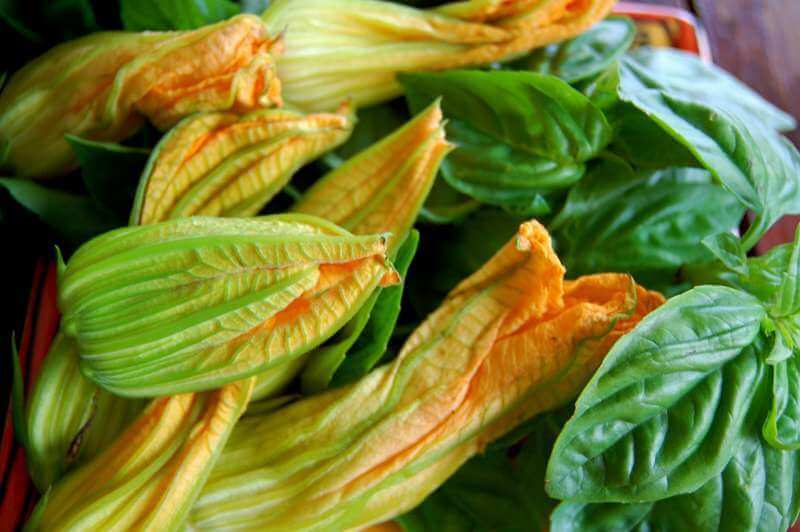
Pumpkin flowers have long been used in cooking by the peoples of the world. They are prized for their nutrients as well as interesting flavor characteristics. In some countries, they are sold in supermarkets along with potatoes and cabbage.
Many gardeners from the CIS countries grow pumpkin for personal purposes, using both its fruits and making tinctures from the seeds. Even the leaves are used in the preparation of recipes from traditional medicine.
Botanical features of pumpkin
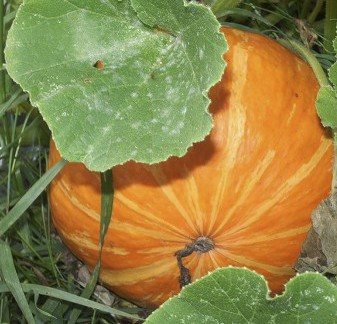

Pumpkin is an annual herb.
Stem creeping, branched, consists of the main stem and lateral shoots. The length of the main stem of long-leaved pumpkins can be up to 15 meters. Shoots of the first order depart from the main stem, the third order from the shoots of the second order, and so on. In bush forms, shoots are shortened, from 0.5 to 2 meters. The stem is covered with hairs.
Leaves erect, petiole length 12-30 cm. Leaf color - various shades of green. Antennae appear in the leaf axils, which cling to nearby plants and objects, thereby increasing the resistance of the pumpkin bush to the wind. The leaf shape can be round, cordate, or five-lobed. The leaf blade and petiole are heavily covered with hairs or spiny thorns.
Root system consists of a taproot, lateral roots of the first order and lateral roots of the following orders. The taproot penetrates into the soil to a depth of 2-3 meters, the lateral roots of the first order are located mainly in the arable layer at a depth of 40-50 cm. Suction roots, covered with root hairs, are formed on all roots. The branched and powerful root system allows the pumpkin plant to extract well food and moisture from the soil.
Flowers the pumpkin is dioecious, yellow, bell-shaped. Flowers are solitary, located on the main stem and lateral shoots. The corolla of the flower is five-petal, the ovary is inferior. Under favorable conditions, flowers open early in the morning, and close by lunchtime. Male flowers wither by the end of the day, female flowers "live" longer. Flowers are located on the main stem and first-order shoots. Pollination - cross, occurs with the help of bees, bumblebees, wasps. Zhukov.
Fetus - pumpkin (polyspermous berry), has an internal plane with placentas and seeds. Fruits are formed mainly on the main stem and first-order shoots. In hard-bore and large-fruited pumpkin, the fruits are usually round in shape, the seed cavity is in the center of the fruit. Butternut squash has elongated fruits, the seed cavity is at one end.
Seeds pumpkins last up to 8-10 years, but the most productive seeds are freshly harvested and have a shelf life of up to 3-4 years.
Top dressing
When growing pumpkin outdoors, until the foliage closes, the plants are regularly loosened and watered. Apply liquid organic or mineral dressings, but not earlier than 10 days after transplanting pumpkin seedlings to a permanent place.
Chicken droppings and mullein are suitable as organics. Chicken droppings are poured with water at a temperature of 40 0, mixed until a creamy mass is formed and infused until bubbles appear. It is not recommended to insist longer, otherwise the benefits of fertilization will be less.
The finished infusion is diluted in water in a ratio of 1:20, that is, half a liter per bucket of water. Previously, the holes are spilled with water so that the solution of chicken manure does not burn the pumpkin roots.The mullein infusion is diluted with water in a ratio of 1:10.
For mineral feeding, take a matchbox of ammonium nitrate in a bucket of water.
Biological features of pumpkin
Pumpkin is demanding on heat, soil fertility and moisture.
Temperature... Pumpkin seeds begin to germinate at + 10 + 12 ° С, but a more favorable temperature for germination is + 20 + 30 ° С. Usually, seedlings appear on the 10-15th day, and under favorable conditions, on the 6-9th day after sowing. You need to sow pumpkin in the ground warmed up to + 12 + 14 ° С. Seeds that have lain in cold ground for a long time can simply rot, and if they do sprout, the plants will be weak.
Different types of pumpkin are demanding for heat. The most demanding is butternut squash, which limits the area of its cultivation to the southern regions. Hardy pumpkin varieties are the most cold-resistant of pumpkins. For a hard-barked pumpkin for normal growth and development, the optimum temperature is + 20 + 25 ° С, for nutmeg and large-fruited pumpkin + 25 + 30 ° С. If the temperature is below optimal, then the growth and development of plants is delayed, the yield decreases.
The temperature dropped to 0-1 ° C can severely damage pumpkin seedlings. During flowering, a prolonged decrease in temperature to + 15 ° C can cause the buds and flowers to fall off, the pollen will not ripen well, the fruits will not set. High temperatures are also unfavorable for pumpkin. The optimum temperature for growth, development, flowering and fertilization is + 20 + 25 ° С during the day and + 18 + 20 ° С at night.
The root system of the pumpkin reacts even more strongly to low temperatures than the aerial part of the plant. If the temperature is kept below + 15 ° С for a long time, the roots are damaged by pathogenic microorganisms and begin to die off.
Moisture... The pumpkin grows throughout the growing season and intensively builds up its leaf mass, so it needs a lot of water all the time. Especially during flowering and fruit pouring. Even a short-term drought causes the ovaries to fall off and does not allow the formation of new ones.
Shine... Pumpkin is a light-loving plant and needs good lighting. In a sunny place, it grows faster and the fruits ripen well. In cloudy weather or with thickened plantings, the yield decreases, and the fruits accumulate less sugars and dry matter. The pumpkin plant is neutral in terms of the duration of illumination. They bear fruit well in both "long" and "short" day conditions.
The soil... Pumpkin "loves" light texture and loose soils. It grows well on loamy or sandy chernozems, does not tolerate acidic soils, and is responsive to the use of organic fertilizers.
Advantages and disadvantages
Pumpkin Healing, like other varieties, has pluses and minuses, they must be taken into account when growing this plant.
Pumpkin benefits:
- frost resistance;
- resistance to sudden changes in temperature;
- undemanding care;
- high productivity;
- excellent taste and maximum usefulness of the pulp;
- a medium-sized bush, respectively, more plants can be grown on the site;
- long shelf life.
Disadvantages of Pumpkin Healing:
- average immunity;
- exactingness to the composition of the soil.
Pumpkin cultivation technology
The technology of growing pumpkin does not involve a lot of time and labor, observing not tricky rules, you can get a good harvest of a useful vegetable. The area for growing pumpkins should be protected from cold winds, well lit and warm. The best precursors for pumpkin: potatoes, tomatoes, cabbage, onions, legumes. The crop rotation period is 5 years. To grow pumpkin, you can not make a separate bed and plant it in the aisles of early potatoes, bush beans, beets, corn. Pumpkin grows well on a compost heap.
Soil preparation
The area set aside for growing pumpkins is prepared in the fall. Deep digging is carried out with the introduction of organic fertilizers (manure, compost or humus) - 8-10 kg. for 1 sq. meter.In the spring, when the soil dries up, 20-30 grams are added to the beds. potassium salt and 50-80 gr. superphosphate per 1 sq. meter and dug again.
On poorly fertilized and heavy soils, it is better to plant the pumpkin in prepared holes, 25-30 cm deep and 30-40 cm wide.Pour 1/2 bucket of compost or rotted manure into each hole, add a handful of ash, mix. Fill the holes with soil, with a layer of 15-20 cm.
In damp areas, pumpkin is grown in small mounds. They are formed from humus, compost or a mixture of sod land with peat. In the upper part of the mound, a hole is made for planting seedlings or sowing seeds.
For growing pumpkins, you can make insulated beds. The beds are formed with a width of 120-140 cm and a height of 20-25 cm. In autumn, deep digging is carried out with a selection of weeds and removal of plant residues. In the spring, in the middle of the ridge, a furrow is made 50 cm wide and 40 cm deep. Rotting plant residues (grass, leaves, tops of vegetable plants) or manure, or all together, are laid in it. Spill hot water and cover with earth. Prepared beds are spilled with 1% manganese solution and covered with foil before planting seedlings or sowing seeds. Decaying manure or rotting plant debris will generate heat and heat the soil and air around the plants - this allows the seedlings to be planted earlier.
Timing
In the southern regions and the middle lane, pumpkin can be grown by sowing in the ground. Hard and large-fruited pumpkin is sown when the soil warms up to + 10 + 12 ° С. Butternut squash is sown at a soil temperature not lower than + 12 + 13 ° C. In the northern regions, as well as for an earlier harvest, pumpkin is grown through seedlings. Sowing for seedlings is carried out at the end of April - the first half of May. Seedlings are planted in the ground at the age of 25 days, when the threat of frost has passed. Considering that the seeds germinate in 5-6 days, the sowing time can be calculated.
Sowing
Before sowing, to stimulate growth, seeds must undergo pre-sowing treatment. To do this, full-fledged, selected seeds must be warmed up at a temperature of + 50 + 60 ° C, for 2-3 hours. Then put the seeds in a damp germination cloth. Sowing is carried out in pots or cups 15x15 cm, filled with soil mixture, which consists of 2 parts of humus, 1 part of peat and 1 part of sod land. Seeds are sown to a depth of 2-3 cm, covered with earth and spilled with warm water. Germination is carried out at a temperature of + 20 + 23 ° C. As soon as shoots appear, the temperature must be reduced to + 13 + 14 ° С.
Seedling care
Seedlings are grown for 25-30 days, during which time they are fed 2 times. For feeding, prepare a mullein solution (1 liter of slurry per 1 bucket of water) with the addition of 20 gr. superphosphate, 15 gr. ammonium nitrate and 15 gr. potassium salt. Solution consumption - 1 glass per 1 plant.
Watering
Water the seedlings sparingly, without flooding and only with warm water. When watering, try not to get on the stems and leaves in order to avoid the occurrence of rot.
Transplanting
Seedlings are planted in the ground on pre-prepared beds. Since the pumpkin is a climbing plant, the distance between the holes should be 1-1.5 meters. 1 liter of water is poured into the hole and the plant is planted, deepening it to the cotyledon leaves. After planting, pour again with warm water and mulch with peat or dry humus. In order for the plants to take root better, at first it is advisable to cover them with a film, covering material. mats, especially at night. Possible frosts can destroy the planted seedlings.
Care
Caring for a pumpkin consists in watering, feeding, loosening the soil, fighting pests and diseases.
Watering... Pumpkin builds up a large vegetative mass and large fruits, therefore frequent watering is required. Watering should be abundant, at least once every 7 days, and even more often during the pouring of fruits.
Top dressing... During the growing season, two dressings are carried out.The first is in the phase of 3-4 leaves, the second is in the flowering period. For feeding, use: mullein solution (1 liter of slurry per 10 liters of water), chicken droppings (0.5 liters of manure infusion per 10 liters of water), mineral fertilizers (20-30 grams of ammonium nitrate, 20-30 grams of potassium salt and 40-50 gr.superphosphate per 10 liters of water) or any complex fertilizer for vegetables (2 tablespoons per 10 liters of water).
During the first feeding, fertilizer is applied into furrows 6-8 cm deep, made at a distance of 20 cm from the plants. With the second top dressing, the depth of the furrows is 10-12 cm, the distance from the plants is 40 cm. After fertilization, the furrows are covered with earth.
Pumpkin bush formation
The pumpkin forms a mass of long shoots and must be shaped to produce large fruits. When 2-3 fruits are tied on the main stem, it is pinched, leaving 5-6 leaves above the outermost fruit. When side lashes are formed, two lashes are left. After 1 fruit appears on them, they are pinched, leaving 5-6 leaves above the fruit. The rest of the lashes are removed to accelerate the growth and ripening of the fruit.
If you want to get a very large fruit, then 1 or 2 fruits should be left on the pumpkin bush, the rest of the ovaries should be removed.
Planks, pieces of plywood or straw should be placed under the fruits of the pumpkin to protect them from decay. As the fruit grows, the leaves around it are thinned out for better sunlight.
Farmers reviews
★★★★★
Olga, 62, librarian, Valuyki. I have been growing medicinal pumpkin in the country for more than 8 years. An excellent variety - unpretentious in care and is famous for its high yield. I noticed one drawback - it needs a lot of fertilizers. But in order not to suffer with the introduction of fertilizing, I plant the plants directly on the compost pit. Pumpkins grow tasty and juicy, they are stored for a very long time. The harvest from two plants is enough for the whole family.
★★★★★
Oleg, 39 years old, manager, Moscow. Healing pumpkin is the most favorite variety. I love its fruits, they are the same as shown in many photos. The pulp is juicy, there are relatively few seeds, but they are very tasty.
Hide
Add your review
Healing pumpkin is not afraid of sharp frosts and many viral diseases. All that a summer resident needs to do is to apply fertilizers on time and take preventive measures against fungal diseases.
0
Harvesting
Pumpkin fruits are harvested once, upon reaching maturity. Fruits of late-ripening varieties can be harvested unripe, they will ripen during storage. Pumpkins are harvested before the first frost. The ripeness of the pumpkin is determined by the shrunken stalk. The fruits are cut along with the stalk, so they are better stored. Pumpkins intended for storage must be dried in the sun. Pumpkins are well stored indoors, in the closet or under the bed, in places protected from the sun.
(2 estimates, average: 3,00 out of 5)
Origin story
Pumpkin is an ancient plant, it began to be cultivated as early as 5 thousand years BC. e. Indians living in the territory of modern Mexico. Confirmation of this is the remains of this culture found in ancient burials.
The pumpkin came to Europe in the middle of the 16th century. Its seeds were brought from America by a navigator born in Spain, Christopher Columbus. Today this melon is cultivated on all continents except Antarctica. It is grown for forage, technical and decorative purposes.
General description of the vegetable
The common pumpkin is a herbaceous annual plant of the pumpkin family. She has:
- Creeping root.
- The stem grows from 5 to 8 m.
- The leaf plate reaches 25 cm. They are alternate, long-petiolate, heart-shaped, five-lobed.
- The development of the spiral tendril occurs in the leaf axil.
- The pumpkin has unisexual yellow flowers that bloom in June.
- The fruit is a false pumpkin berry. It ripens by the end of summer.
- The seeds have a creamy white color, a woody rind. Their length is 1-3 cm.
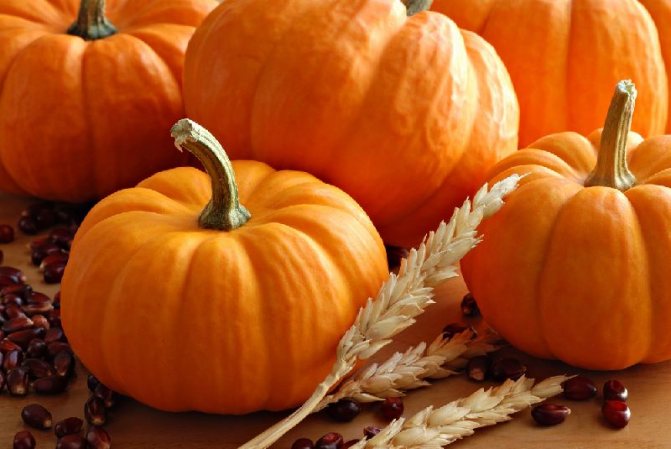

Mexico is considered the birthplace of the plant, where it has been growing for 8000 years. The culture has long been spread in North America.Then they began to grow in Europe and Asia. But the record for cultivation belongs to China, India, Russia.
The benefits of pumpkin juice
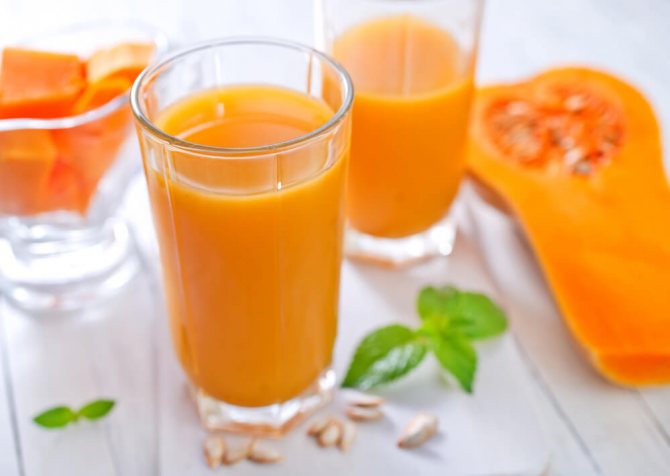

From pumpkin you can get a healthy juice of a thick consistency, with a pleasant honey taste, in which almost all useful substances are preserved. Besides a rich set of minerals and vitamins, it has good antioxidant properties. In case of a flu epidemic or the threat of a cold, you need to drink 200 ml of pumpkin juice every morning to boost immunity. Due to its concentration, it will help well with increased nervous excitement, hemorrhoids, constipation, and vomiting. You can also use it to remove kidney stones.
The benefit of the drink also lies in its high pectin content, due to which it has a regenerating and rejuvenating effect. These abilities have found application in cosmetology. Pumpkin juice lotion helps to eliminate skin redness, copes well with acne, and provides skin regeneration at the cellular level. But people who have increased gastric acidity should not abuse pumpkin juice, since it is the pectin in its composition that contributes to the occurrence of heartburn and nausea.
Freshly squeezed juice is indicated for people suffering from seasonal depression. It's all about the successful combination of vitamin C with almost all vitamins of group B. This combination allows, on the one hand, to relieve fatigue, increase tone, give strength, and on the other hand, to calm the nervous system.
This drink is also indicated for persons who have impaired blood clotting. Vitamin K, which is present in pumpkin juice, will help eliminate this problem. Its deficiency is felt very sharply in old age. Recent scientific studies have confirmed that it is this vitamin that helps the body absorb calcium from food. Therefore, with regular use of pumpkin juice, you can prevent the occurrence of osteoporosis.
Slimming
Pumpkin is a low-calorie vegetable, which is why it is used in different diets. When consumed, the metabolism is accelerated, so the body absorbs food more easily and digests it. This prevents possible metabolic problems and the accumulation of fats and harmful substances in the body.
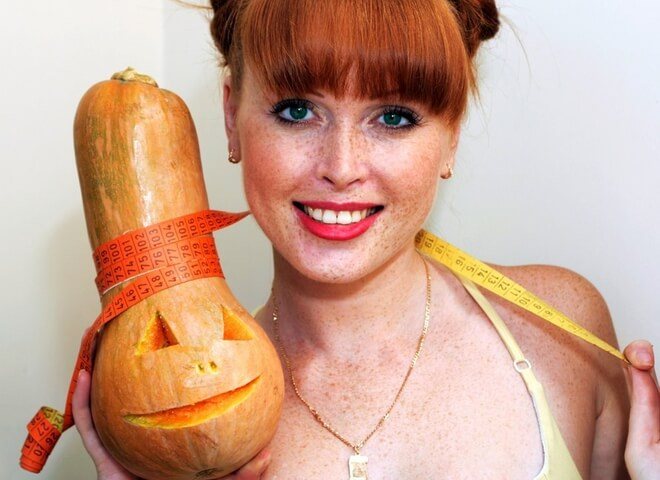

Thanks to the low calorie content, pumpkin dishes can be consumed every day without worrying about the possibility of gaining excess weight. Due to the high fiber content in this vegetable, it is widely used to cleanse the body.
There is a special pumpkin diet. Its basic principles are as follows:
- Remove salt and sugar from the diet.
- Eliminate alcohol and sweets.
- The daily calorie content should be no more than 1200 kcal.
- Food can be taken until 18.00, excluding snacks.
- Drink only coffee without added milk, tea or still mineral water.
The diet menu can be varied, you can compose it yourself, observing the above rules. Pumpkin can be used to make soups, cereals, salads, and can be eaten frozen, dried, baked or boiled.
Pumpkin porridge
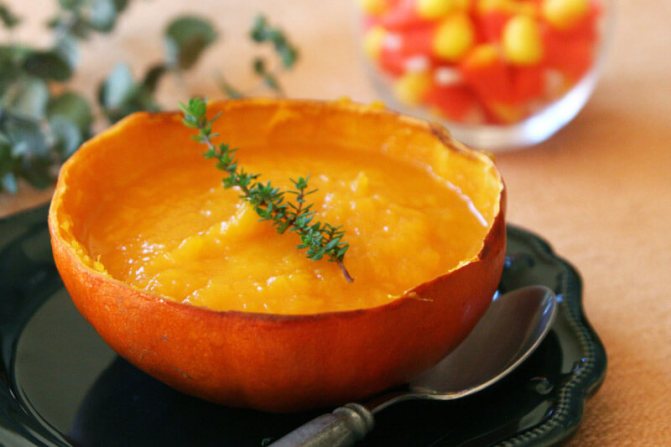

Cut a small pumpkin in half, remove the seeds, trim the peel so that only the pulp remains. Then it needs to be washed and cut into cubes, 300 grams of which are then poured with 1 glass of water and simmer for 15 minutes over low heat. Then add oatmeal - 200 grams. Cook for 30 minutes without adding salt and sugar.
Pumpkin soup
Take 200 grams of pumpkin, potatoes, red bell pepper and cut into cubes. Chop greens, grate carrots and add to previously cooked vegetables. Add water and cook until tender.
Pumpkin salad
On a coarse grater, grate the pulp of the pumpkin, 1 green apple and carrots in equal parts. Mix everything, season with natural yogurt.
Vegetable stew
Dice the pumpkin, tomatoes, potatoes and eggplant in equal parts. Pour everything into a frying pan greased with olive oil, add 0.5 cups of water and simmer until tender.Add parsley, rosemary, dill.
At the end of the diet, you need to switch to a normal diet, but be sure to limit sweets. In no case should the pumpkin be removed from the diet.
Structure
The pumpkin fruit consists of a peel (top shell) - about 17% of the total mass, pulp - up to 75% and seeds - about 11%. Pumpkin is a natural source of many important minerals and vitamins that have a beneficial effect on the body.
Table 1 "Chemical composition of pumpkin"
| Structure | Content in 100 grams |
| Protein | 1 g |
| Carbohydrates | 4.4 g |
| Fats | 0.1 g |
| Alimentary fiber | 2 g |
| Water | 91.8 g |
| Organic acids | 0.1 g |
| Ash | 0.6 g |
| Starch | 0.2 g |
| Sugar | 4.2 g |
| Vitamins | |
| Vitamin A (retinol) | 250 mcg |
| Vitamin B1 (thiamin) | 0.05 mg |
| Vitamin B2 (riboflavin) | 0.06 mg |
| Vitamin B5 (pantothenic acid) | 0,4 mg |
| Vitamin B6 (pyridoxine) | 0.1 mg |
| Vitamin B9 (folic acid) | 14 mcg |
| Vitamin B3 / PP (niacin) | 0.7 mg |
| Vitamin C (ascorbic acid) | 8 mg |
| Vitamin E (tocopherol) | 0,4 mg |
| Minerals | |
| Potassium | 204 mg |
| Calcium | 25 mg |
| Sodium | 4 mg |
| Magnesium | 14 mg |
| Sulfur | 18 mg |
| Phosphorus | 25 mg |
| Chlorine | 19 mg |
| Zinc | 0.24 mg |
| Iron | 0,4 mg |
| Iodine | 1 μg |
| Manganese | 0.04 mg |
| Copper | 180 mcg |
| Fluorine | 86 μg |
| Cobalt | 1 μg |
The energy value of pumpkin is 22 kcal.
In cosmetology
Pumpkin is widely used in cosmetology. For example, rubbing a piece of pulp on your skin every morning can help get rid of acne. It is included in various face masks. Some of them you can cook yourself.


For dry skin
Boil the pulp, take 3 tablespoons of it, add 1 tablespoon of olive or peach oil, mix everything thoroughly. Apply to skin for 20 minutes and rinse with cool water.
For oily skin
Take 3 tablespoons of raw pumpkin gruel, add 1 teaspoon of honey and 1 yolk. Mix everything well, heat in a water bath to a temperature of 40 ° C, stirring continuously. Apply on the face, except for the triangle of the mouth and around the eyes, for 15 minutes, then rinse with warm water. This mask is also effective for acne.
Toning mask
Grate the pulp, squeeze out the juice, moisten a cotton pad and wipe your face with it. After 10 minutes, wash with warm water. Alternatively, you can apply grated pulp for 15 minutes.
Overview of varieties for open ground
Productive types of pumpkin are represented by large-fruited, hard-barked and nutmeg. Each includes several varieties.
Large-fruited
This type of pumpkin includes several varieties:
- Volzhskaya gray, a drought-resistant variety, has round light gray fruits weighing up to 8 kg.
- At the merchant's wife, a mid-season variety, the weight of the fruit reaches 15 kg.
- The fruit of the Gribovskaya winter, late-ripening variety, flattened. It has a gray with red or yellow flesh. It weighs up to 3 kg.
- The fruits of the large Common Pumpkin are considered champions. Their weight reaches 25 kg.
- The early maturing Russian woman is characterized by climbing. Its fruits weigh 3-4 kg.
Hard-faced
Of the varieties, only hard varieties are common pumpkin types:
- Freckles, varieties with a light green skin, have an orange pulp. Fruit weight reaches 3 kg.
- It takes 85 days to ripen the fruits of Smile, an orange-colored variety. They weigh about one and a half kilograms.
- The mid-season variety Aport has round orange fruits with yellow-orange pulp. They weigh 7 kg.
- The Accorn variety has the name "Acorn". The rind is dark green or orange in color, the flesh is orange-yellow.
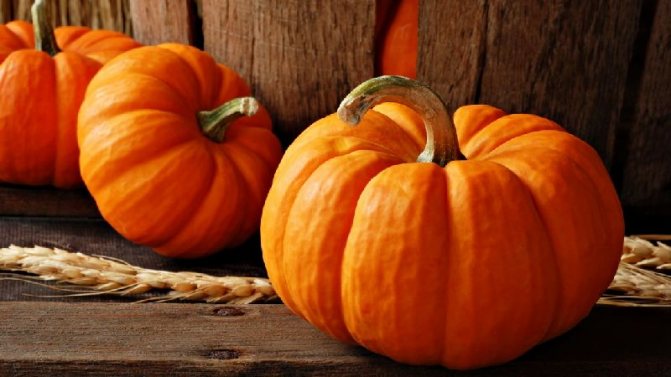

Muscat
For harsh regions, pumpkin cultivation is possible by seedlings. It includes popular varieties:
- Vitamin pumpkin has green oval fruits with bright orange pulp.
- Bylinka has bright orange pulp of fruits, peel of gray tones.
- Butternut is a variety with orange flesh, pear-shaped, rich in vitamins and minerals. Its fruits weigh 1 kg.

